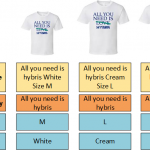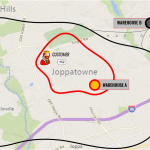What is a best strategy for sorting products on the category pages? How hybris built-in product sorting capabilities can be improved? What options came from the previous century and need to be taken out? Read More »
Every project in hybris is unique. The different set of modules, different configuration, different design, different customer expectations. Increasing demands and challenges make us create a highly customized solutions.
I was wondering what pieces of functionality would be good for any hybris project regardless of the specific purpose, requirement and expectations?
In this article, I will talk about three components that seem to be “must have” for all systems I can imagine. They are optional, and of course they will add some extra costs to your project. However, according to my vision, without them you spend more after the system is launched. Read More »

This weekend I played around with the first version of hybris, that was released in far 2001. What components from the initial version are alive today? How did they look like? Read More »
Today’s blog update is about some hidden features of HAC: hidden pages and pop-ups, a system try notifier, and an easter egg . Read More »
Generally, FlexibleSearch engine is well-documented on hybris wiki. However, as one of the oldest components of hybris, the engine has undocumented behavior that’s good to know about. In this article, I am going to talk about field and type modifiers, predefined named values. You will also learn about an interesting issue with the “order by” markers. Read More »
In this article, I am going to tell you about undocumented/poorly documented capabilities of the ImpEx Engine. There are also a number of the nontrivial usage patterns that can be useful in your projects. Read More »
This article is focused on the storefront-related changes in hybris 6.2, specifically in HTML templates, styles and javascripts. If you are considering an update to 6.2 from the previous versions (especially, hybris 6.1), this information should be useful. Read More »
In October 2016, SAP introduced hybris 6.2. This technical reference lists all new and updated itemtypes, attributes and beans. They generally have self-explanatory names, so this information will help you to get a starting point for a deeper research. Read More »

Variants are a common concept in e-commerce systems: products that differ in some aspect from one another but are based on the same model. In this article I explain five different architecture design patterns used for the product variant modeling. Examples, pros and cons, special cases, limitations. Read More »

A geofence is a virtual perimeter or a fence around a geographical real-world area of interest. In this article I introduce a proof-of-concept that demonstrates the power of geofencing in the e-commerce. The available delivery and payment methods, delivery cost and time calculations, product prices and taxes can depend on geographical areas the customer is in. Read More »
